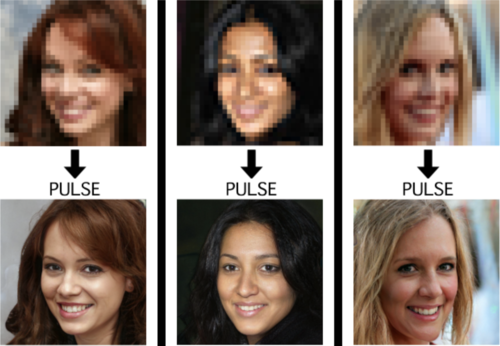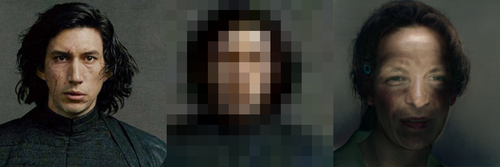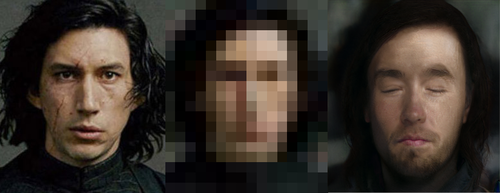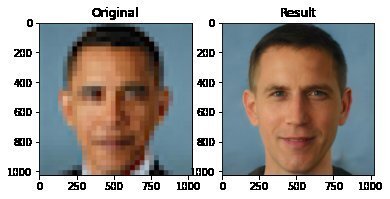We Need Your Help To Find STEVE
We Need Your Help to Find STEVE
Glowing in mostly purple and green colors, a newly discovered celestial phenomenon is sparking the interest of scientists, photographers and astronauts. The display was initially discovered by a group of citizen scientists who took pictures of the unusual lights and playfully named them “Steve.”
When scientists got involved and learned more about these purples and greens, they wanted to keep the name as an homage to its initial name and citizen science discoverers. Now it is STEVE, short for Strong Thermal Emission Velocity Enhancement.

Credit: ©Megan Hoffman
STEVE occurs closer to the equator than where most aurora appear – for example, Southern Canada – in areas known as the sub-auroral zone. Because auroral activity in this zone is not well researched, studying STEVE will help scientists learn about the chemical and physical processes going on there. This helps us paint a better picture of how Earth’s magnetic fields function and interact with charged particles in space. Ultimately, scientists can use this information to better understand the space weather near Earth, which can interfere with satellites and communications signals.

Want to become a citizen scientist and help us learn more about STEVE? You can submit your photos to a citizen science project called Aurorasaurus, funded by NASA and the National Science Foundation. Aurorasaurus tracks appearances of auroras – and now STEVE – around the world through reports and photographs submitted via a mobile app and on aurorasaurus.org.
Here are six tips from what we have learned so far to help you spot STEVE:
1. STEVE is a very narrow arc, aligned East-West, and extends for hundreds or thousands of miles.

Credit: ©Megan Hoffman
2. STEVE mostly emits light in purple hues. Sometimes the phenomenon is accompanied by a short-lived, rapidly evolving green picket fence structure (example below).

Credit: ©Megan Hoffman
3. STEVE can last 20 minutes to an hour.
4. STEVE appears closer to the equator than where normal – often green – auroras appear. It appears approximately 5-10° further south in the Northern hemisphere. This means it could appear overhead at latitudes similar to Calgary, Canada. The phenomenon has been reported from the United Kingdom, Canada, Alaska, northern US states, and New Zealand.

5. STEVE has only been spotted so far in the presence of an aurora (but auroras often occur without STEVE). Scientists are investigating to learn more about how the two phenomena are connected.
6. STEVE may only appear in certain seasons. It was not observed from October 2016 to February 2017. It also was not seen from October 2017 to February 2018.

Credit: ©Megan Hoffman
STEVE (and aurora) sightings can be reported at www.aurorasaurus.org or with the Aurorasaurus free mobile apps on Android and iOS. Anyone can sign up, receive alerts, and submit reports for free.
Make sure to follow us on Tumblr for your regular dose of space: http://nasa.tumblr.com.
More Posts from Jupyterjones and Others






Raspberry Multiverse
Stephen Hawking’s Grand design is leading to a non symmetric multiverse. However there is reason to suggest a full symmetric multiverse with point symmetry at the centre of a raspberry shaped pulsating bubble multiverse. For an entangled multiverse, each quantum should have its own 12 fold entanglement relation to all 12 opposite (anti) quantums, each located inside one of the 12 universes. The result is called: Poincaré dodecahedral space symmetry. (see also below: B.F.Roukema) A dodecahedron is also called “Buckyball” An other evidence for space symmetry and the centre of the multiverse is the so called DARK FLOW. Dark flow seems to be found at the edge of the visible universe!! There the “dark flow centre is represented by a so called "Pitch of spacetime”
Depixellation? Or hallucination?
There’s an application for neural nets called “photo upsampling” which is designed to turn a very low-resolution photo into a higher-res one.

This is an image from a recent paper demonstrating one of these algorithms, called “PULSE: Self-Supervised Photo Upsampling via Latent Space Exploration of Generative Models”
It’s the neural net equivalent of shouting “enhance!” at a computer in a movie - the resulting photo is MUCH higher resolution than the original.
Could this be a privacy concern? Could someone use an algorithm like this to identify someone who’s been blurred out? Fortunately, no. The neural net can’t recover detail that doesn’t exist - all it can do is invent detail.
This becomes more obvious when you downscale a photo, give it to the neural net, and compare its upscaled version to the original.

As it turns out, there are lots of different faces that can be downscaled into that single low-res image, and the neural net’s goal is just to find one of them. Here it has found a match - why are you not satisfied?
And it’s very sensitive to the exact position of the face, as I found out in this horrifying moment below. I verified that yes, if you downscale the upscaled image on the right, you’ll get something that looks very much like the picture in the center. Stand way back from the screen and blur your eyes (basically, make your own eyes produce a lower-resolution image) and the three images below will look more and more alike. So technically the neural net did an accurate job at its task.

A tighter crop improves the image somewhat. Somewhat.

The neural net reconstructs what it’s been rewarded to see, and since it’s been trained to produce human faces, that’s what it will reconstruct. So if I were to feed it an image of a plush giraffe, for example…

Given a pixellated image of anything, it’ll invent a human face to go with it, like some kind of dystopian computer system that sees a suspect’s image everywhere. (Building an algorithm that upscales low-res images to match faces in a police database would be both a horrifying misuse of this technology and not out of character with how law enforcement currently manipulates photos to generate matches.)
However, speaking of what the neural net’s been rewarded to see - shortly after this particular neural net was released, twitter user chicken3gg posted this reconstruction:

Others then did experiments of their own, and many of them, including the authors of the original paper on the algorithm, found that the PULSE algorithm had a noticeable tendency to produce white faces, even if the input image hadn’t been of a white person. As James Vincent wrote in The Verge, “It’s a startling image that illustrates the deep-rooted biases of AI research.”
Biased AIs are a well-documented phenomenon. When its task is to copy human behavior, AI will copy everything it sees, not knowing what parts it would be better not to copy. Or it can learn a skewed version of reality from its training data. Or its task might be set up in a way that rewards - or at the least doesn’t penalize - a biased outcome. Or the very existence of the task itself (like predicting “criminality”) might be the product of bias.
In this case, the AI might have been inadvertently rewarded for reconstructing white faces if its training data (Flickr-Faces-HQ) had a large enough skew toward white faces. Or, as the authors of the PULSE paper pointed out (in response to the conversation around bias), the standard benchmark that AI researchers use for comparing their accuracy at upscaling faces is based on the CelebA HQ dataset, which is 90% white. So even if an AI did a terrible job at upscaling other faces, but an excellent job at upscaling white faces, it could still technically qualify as state-of-the-art. This is definitely a problem.
A related problem is the huge lack of diversity in the field of artificial intelligence. Even an academic project with art as its main application should not have gone all the way to publication before someone noticed that it was hugely biased. Several factors are contributing to the lack of diversity in AI, including anti-Black bias. The repercussions of this striking example of bias, and of the conversations it has sparked, are still being strongly felt in a field that’s long overdue for a reckoning.
Bonus material this week: an ongoing experiment that’s making me question not only what madlibs are, but what even are sentences. Enter your email here for a preview.
My book on AI is out, and, you can now get it any of these several ways! Amazon - Barnes & Noble - Indiebound - Tattered Cover - Powell’s - Boulder Bookstore

Planetary Frequencies.

Jupiter’s Great Red Spot
Jupiter’s Great Red Spot (GRS) is an atmospheric storm that has been raging in Jupiter’s southern Hemisphere for at least 400 years.
About 100 years ago, the storm covered over 40,000 km of the surface. It is currently about one half of that size and seems to be shrinking.
At the present rate that it is shrinking it could become circular by 2040. The GRS rotates counter-clockwise(anti-cyclonic) and makes a full rotation every six Earth days.
It is not known exactly what causes the Great Red Spot’s reddish color. The most popular theory, which is supported by laboratory experiments, holds that the color may be caused by complex organic molecules, red phosphorus, or other sulfur compounds.
The GRS is about two to three times larger than Earth. Winds at its oval edges can reach up to 425 mph (680 km/h)
Infrared data has indicated that the Great Red Spot is colder (and thus, higher in altitude) than most of the other clouds on the planet
Sources: http://www.universetoday.com/15163/jupiters-great-red-spot/ http://www.space.com/23708-jupiter-great-red-spot-longevity.html







The 21 Card Trick created in Python.
See how it works and read a little more about it here: [x]
Feel free to ask any questions you may have. :)

This shows that the probability of a random variable is maximum at the average and diminishes as one goes away from it, eventually leading to a bell-curve.


#beingacomputerprogrammingmajor : Testing out html scripts on Pokemon Go and finding out it actually works.
-
 nebulousnoiz liked this · 1 year ago
nebulousnoiz liked this · 1 year ago -
 prettylittlebigliars liked this · 2 years ago
prettylittlebigliars liked this · 2 years ago -
 beclynns-posts liked this · 3 years ago
beclynns-posts liked this · 3 years ago -
 meikodenji liked this · 3 years ago
meikodenji liked this · 3 years ago